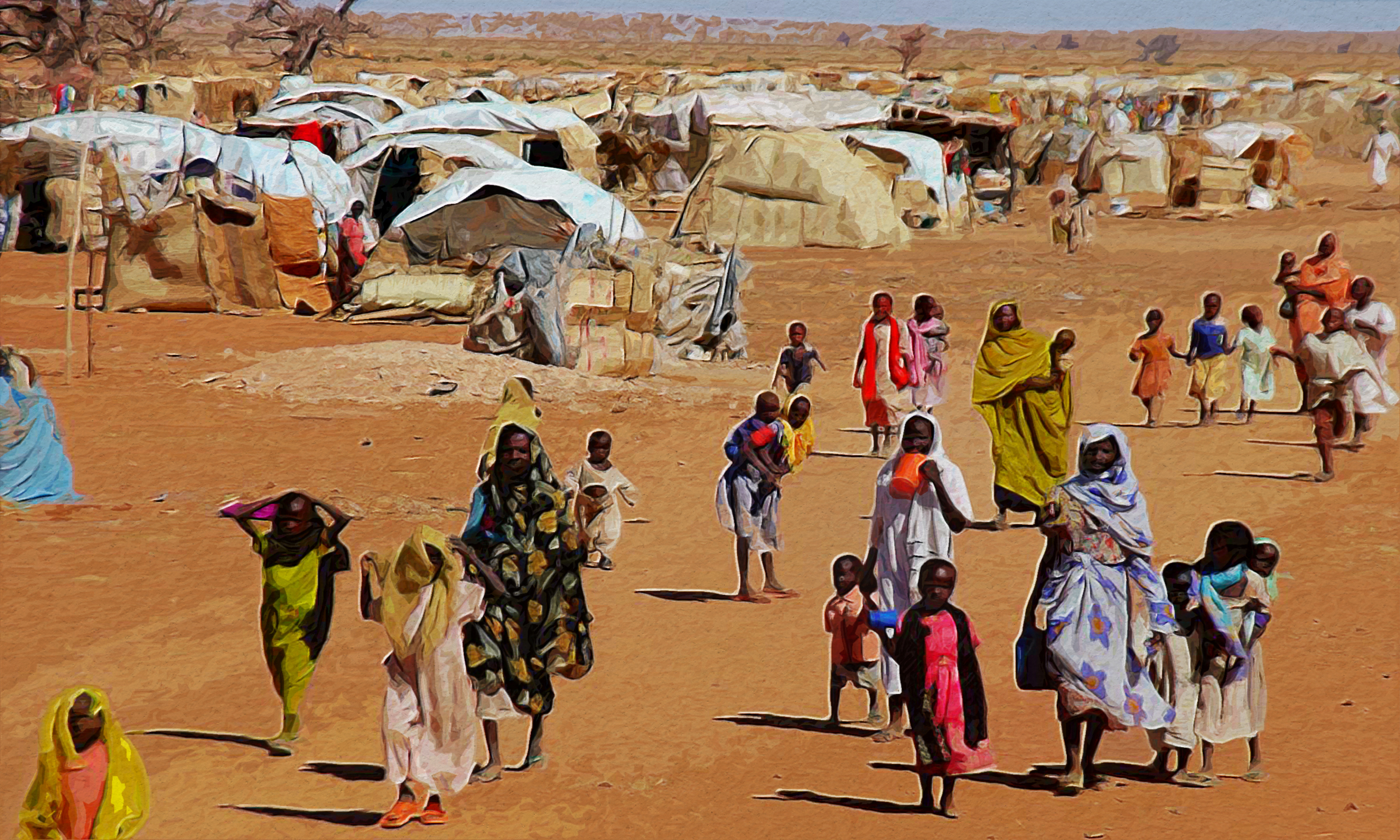Disaster Risk Reduction and Multi-hazard Early Warning

Sudan is a disaster-prone country. The reoccurrence of disasters resulted in increasing levels of socioeconomic vulnerability, and poverty.
Floods, Drought, and desertification are the most common environmental hazards together with other hazards and disasters either man-made or natural such as civil conflicts, pest infestation and epidemics, these have had immense devastating impacts on, the social structure and the economies of the country.
Human and animal life in Sudan depends on a delicate balance of soil, water, and flora. Disruption of any one of these vital elements creates hazards and lead to conflict.Factors such as climatic change, land degradation, unplanned urbanization, are the main contributing factors that affect the resilience of the local communities, causing significant damages to the environment and livelihood, especially in rural areas.
Communities living in vulnerable areas are more susceptible, for there are few mechanisms of EWS in place to respond efficiently to hazards.
EWS is able to accurately capture the long-term behavior of established political violence, EWS can be a useful complement to civil conflict-warning systems, and also serves as a reference against which future improvements can be evaluated.
Objectives
The objective of people-centered multi-hazard early warning systems is to empower individuals and communities threatened by natural and human-induced hazards to act in sufficient time and in an appropriate manner to reduce the loss of life and damage to property and the environment, facilitate decision-making process at all levels and sectors
Rationale
People-centered early warning systems empower communities to prepare for and confront the power of natural hazards. However, the efficiency of such systems is to be measured in terms of lives saved and reduction in losses, which is directly related to the execution of an anticipated response by the people and institutions once a warning is issued.
Elements Multi-hazard people-centered Early Warning Systems Early Warning System
A complete and effective, people-centered early warning system – EWS – comprises four inter-related elements,
(1) disaster risk knowledge based on the systematic collection of data and disaster risk assessments;
(2) detection, monitoring, analysis, and forecasting of the hazards and possible consequences;
(3) dissemination and communication, by an official source, of authoritative, timely, accurate and actionable warnings and associated information on likelihood and impact; and
(4) preparedness at all levels to respond to the warnings received is included to emphasize the major components that comprise a people-centered early warning system, and why each is important.
Best practice EWS also has strong inter-linkages between all elements in the chain. good governance and appropriate institutional arrangements are critical to the development of effective early warning systems. Good governance is encouraged by robust legal and regulatory frameworks and supported by long term political commitment and integrated institutional arrangements.
Cross-cutting Issues:
To be effective, early warning systems need to actively involve the communities at risk, facilitate public education and awareness of risks, effectively disseminate messages and warnings and ensure there is the constant state of preparedness.
There is a range of overarching issues that should be taken into account when designing and maintaining effective early warning systems.
- • Effective Governance and Institutional Arrangements
• A Multi-Hazard Approach
• Involvement of Local Communities
• Consideration of Gender Perspectives and Cultural Diversity
International context:
The Sendai Framework for Disaster Risk Reduction 2015-2030 – the successor instrument to the Hyogo Framework for Action (HFA) 2005-2015: Building the Resilience of Nations and Communities to Disasters – recognizes the benefits of multi-hazard early warnings systems and enshrines them in one of its seven global targets, notably target (g): “Substantially increase the availability of and access to multi-hazard early warning systems and disaster risk information and assessments to the people by 203, It states that it is “critical to anticipate, plan for and reduce disaster risk in order to more effectively protect persons, communities and countries, their livelihoods, health, cultural heritage, socioeconomic assets, and ecosystems, and thus strengthen their resilience
